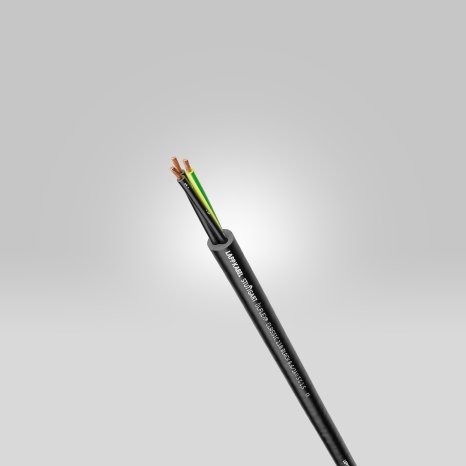The year 2050 could be a milestone in terms of sustainability and climate protection. According to the Green Deal adopted by the European Commission in 2019, Europe will be the first climate-neutral continent. In order to achieve this goal, many adjustments will be made, especially by industrial companies, as they are among the largest emitters of greenhouse gases. But where can they best start?
For example, when calculating the product carbon footprint or CO₂ footprint of products. "The product carbon footprint records all greenhouse gases in the unit of measurement CO₂ equivalents (CO₂e) that a product causes during its life cycle," summarises Anna Maier, Project Manager Product Sustainability at LAPP, who is responsible for and driving the project at LAPP. "The 'e' stands for equivalents and describes the fact that not only carbon dioxide (CO₂) is included in the calculation, but also all greenhouse gases that contribute to climate change, including methane (CH4), nitrous oxide (N₂O) and fluorinated greenhouse gases."
CO₂ footprint becomes a competitive advantage
The calculation has advantages both for LAPP itself and for LAPP customers: By determining the PCF of their own products, LAPP customers can use these verified values for their own calculations (Scope 3). This will become increasingly important in the future, as companies are being assessed more and more on the basis of their CO2 emissions and are increasingly required by law to disclose them. As a result, more and more companies are setting themselves the goal of reducing CO2 emissions, for example by producing in a climate-neutral way or by making their products more environmentally friendly. However, this requires a solid data basis.
If companies know their own emission values, they can determine for themselves where they need to start in order to implement effective climate protection measures and reduce greenhouse gases. This includes, for example, improving energy efficiency, using renewable energies or making supply chains more sustainable in order to manufacture more climate-friendly products. The same applies to customers and investors who are paying more attention to the carbon footprint of their suppliers.
Identify opportunities for improvement
LAPP itself also uses its own PCF values to set an important course for climate protection and to meet the challenges of the future. In order to achieve its own sustainability goals, the Stuttgart-based company needs this precise data to measure its progress and identify opportunities for improvement "Transparency is an important keyword here," explains Anna Maier. "Both our customers and we at LAPP ourselves can access validated values." To ensure high data quality, the calculation methodology in accordance with ISO 14067 and the PCF results were independently audited by DEKRA. The verified values guarantee PCFs in accordance with the current standards, which LAPP also makes available to its customers.
The leading provider of integrated solutions and branded products in the field of cable and connection technology takes a systematic approach to calculating the PCF and first calculates the values of the best-selling products. The first verified PCFs were calculated for the ÖLFLEX® CLASSIC 110 connection and control cable, followed by around 2,500 other articles in the ÖLFLEX® series. All CO₂ emissions are taken into account according to the "cradle-to-gate" approach, i.e. all data from raw material extraction to production, including storage and packaging, until the product leaves the LAPP logistics centre. It is particularly challenging to ensure high data quality and data availability via suppliers or - if there are no reliable values - via secondary data from CO₂ databases.
LAPP derives measures from the PCF
More than half of the emissions are caused by copper extraction. This is what the strands of the cable are made of. In order to reduce the environmental impact, LAPP will be focussing on copper suppliers with a lower carbon footprint in the future, for example by using a high proportion of secondary copper, which is obtained through recycling. In addition, LAPP is recycling more and more itself, for example at the LAPP plant in Grimaud, France, which has two facilities that automate copper recycling and make it possible at its own plant. "Our long-term goal is to create and reduce an externally verified carbon footprint for all LAPP products. In this way, we show that LAPP is taking responsibility for the greenhouse gases of its own products," says Anna Maier.

